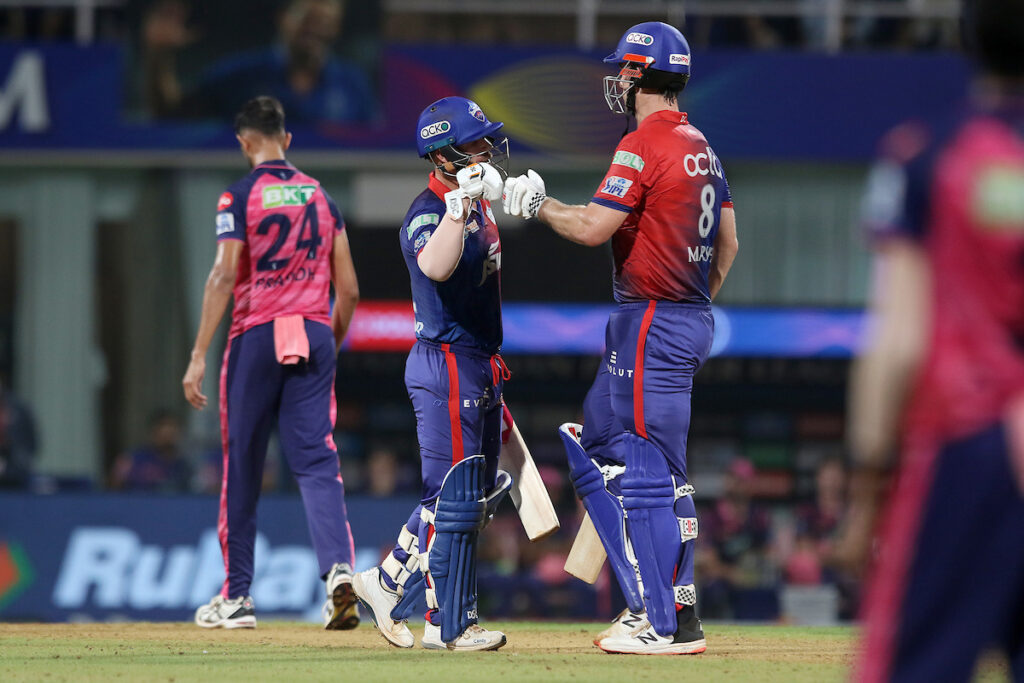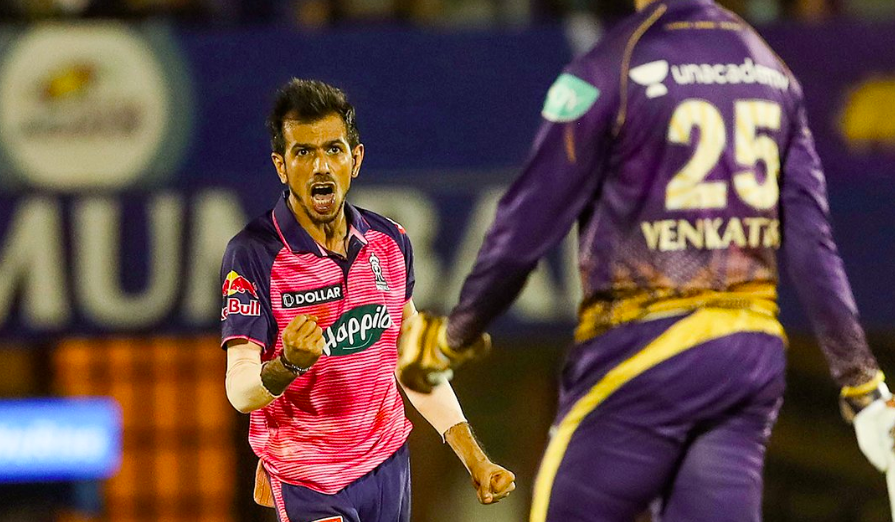India and Rajasthan Royals veteran wristspinner Yuzvendra Chahal believes it’s time for the bails to go and for cricket to consider the contact with the stumps as a sufficient means for the batter to be out bowled.
The 31-year-old raised the issue with the heavy bails sitting on top of the LED stumps, which refused to fall off on his bowling on May 11 even as his legbreak brushed the side of the stumps after Delhi Capitals batter David Warner went for an attempted drive.
Batting on 22 off 20 balls at the time, the Australian went on to blast a critical 52 not out in DC’s run-chase, allowing them to sail through to a victory in a must-win league-stage encounter. Chahal was left shocked by the incident, which has retriggered debates around the usage of LED bails and the existence of bails in the first place.
Also read 👉 Marsh plays wonderful innings of 89 as Delhi Capitals breeze past Rajasthan Royals

ESPNcricinfo expert and former India cricketer Sanjay Manjrekar recently made a point against the usage of bails in the modern-day game. He highlighted the very idea of bringing the bails into play was to ensure that when the ball made contact with the stumps, the umpires were aware the batter was dismissed. Given that stumps now carry LED lights in most popular contests, Manjrekar argued, why can’t only the contact with the three sticks suffice.
Speaking to ESPNcricinfo himself, Chahal agreed with the ex-cricketer turned commentator and said a batter can’t be allowed to get away from a straightforward dismissal like this just because the bails didn’t come off.
“Since it was first time this happened with me, even I was shocked because the ball hit the wickets and the bails did not fall. If such a thing happens at a crucial time especially with a batsman like Warner, who does not offer too many chances… so if he had got out at that juncture then probably the match result could have been different,”
Chahal said.
He added he had worked over the plan and the entire set-up against Warner, going “fuller” to try and tempt him into a drive and turning one sharply into him to hit the stumps.

And thus, when denied a much-deserved breakthrough by the debatable nature of the laws in place, he felt even more aggrieved.
“The way he plays with a short backlift [trying to hit more square of the pitch], I wanted to create the gap [between the bat and the ball] because if the ball is turning, I have to go for the wicket.”
Not just bowlers, two other forms of dismissals – stumpings and the run-outs – are also adjudicated by the match officials through the use of the LED stump technology. As per the existing rules, the batter can only be dismissed if the bails fall off the top of the stumps. LED lights flash for the viewers and players to be seen when one or both of the bails have fallen off.
Against Warner, the bail adjoining the middle and the leg stumps came off for a brief second, leading to the start of celebrations among Chahal and RR wicketkeeper Sanju Samson, only for it to rest back in its original position and allow the batter to escape a clear bowled dismissal.
Chahal said rules should not be a barrier to what is the correct call. He added this could easily have happened in a match of bigger context, say the final, and that would be a travesty of justice for the bowling side.


